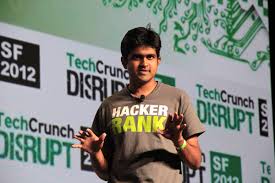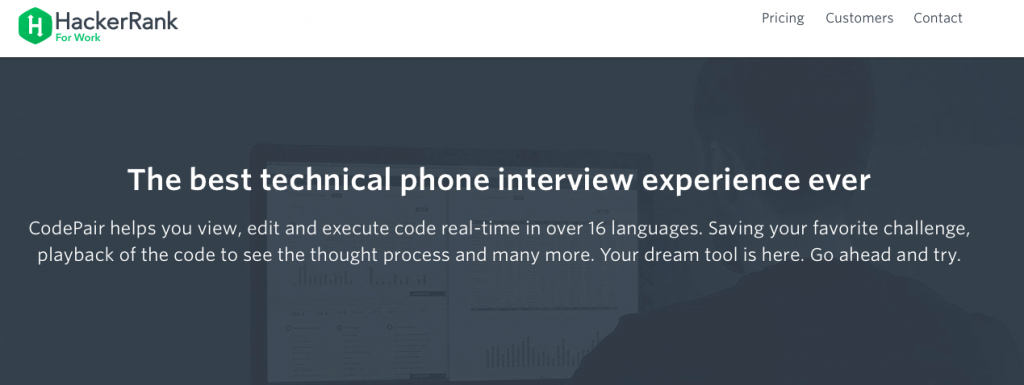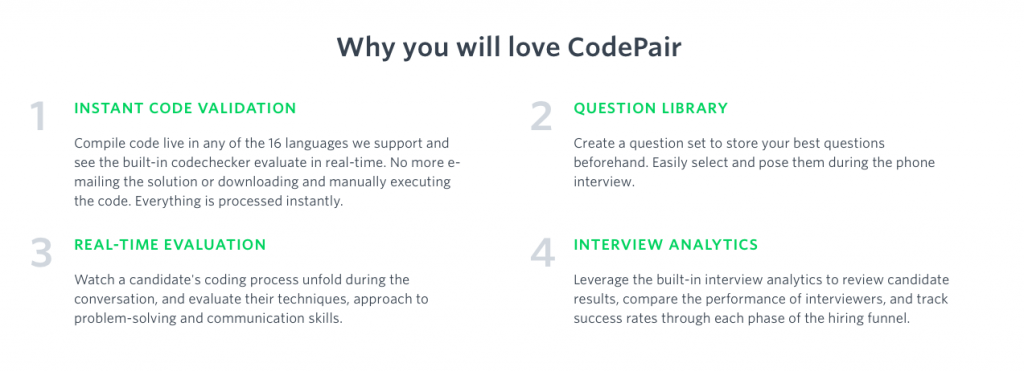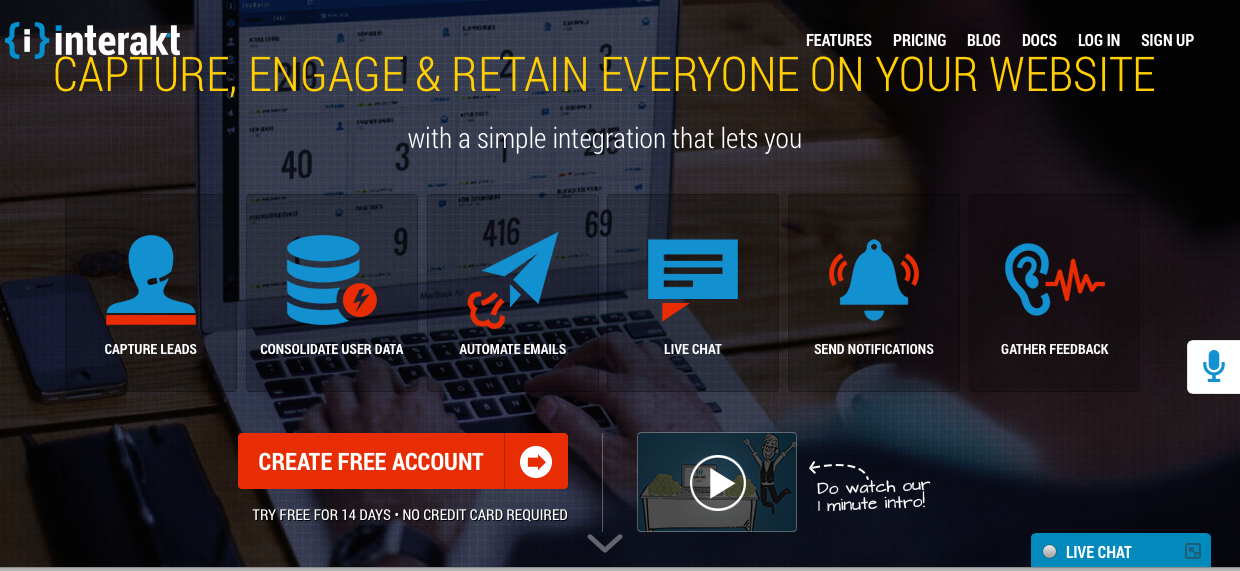 I am one of the founders of HackerRank, formally called InterviewStreet, where we are building a platform for programmers to hone their skills and companies to streamline their recruiting process. Currently we are a team of 66 split across Palo Alto and Bangalore and we have been signing up companies like FB, Amazon, VMWare, Bloomberg, etc. as our customers while simultaneously growing our developer community. We originally started off with a platform for mock interviews but we pivoted based on customer feedback and we kept iterating until we found a gap in technical recruiting which we discovered had a huge market but was struggling from a recruitment perspective which is why we chose to go ahead and tackle this domain.
I am one of the founders of HackerRank, formally called InterviewStreet, where we are building a platform for programmers to hone their skills and companies to streamline their recruiting process. Currently we are a team of 66 split across Palo Alto and Bangalore and we have been signing up companies like FB, Amazon, VMWare, Bloomberg, etc. as our customers while simultaneously growing our developer community. We originally started off with a platform for mock interviews but we pivoted based on customer feedback and we kept iterating until we found a gap in technical recruiting which we discovered had a huge market but was struggling from a recruitment perspective which is why we chose to go ahead and tackle this domain.
 To aid in this recruitment process, we recently launched Codepair – a tool for real-time technical interviews. With this tool, you can view, edit and execute code in real-time in over 16 programming languages. When interviewing someone for a programming position there are a number of biases which both the recruiter and the candidate encounter. Factors such as the programming environment, spoken language, etc. can impact a recruiter’s decision when hiring someone. In fact, I remember my first interview where I wrote a syntax which the interviewer wasn’t familiar with. It was a new syntax and was correct but due to the lack of familiarity on the interviewer’s part we spent over 15 minutes debating over the validity of the program. Though I now understand why I didn’t get the job, that situation could have been avoided if I had a product that is so home to the environment of a programmer. Ultimately when you as an interviewer are taking a decision on whether to recruit a candidate or not, it is your bias right? You are processing a set of data internally to gauge if this person is going through to the next round or not and we want to make sure that we can eliminate as many of these biases as we can.
To aid in this recruitment process, we recently launched Codepair – a tool for real-time technical interviews. With this tool, you can view, edit and execute code in real-time in over 16 programming languages. When interviewing someone for a programming position there are a number of biases which both the recruiter and the candidate encounter. Factors such as the programming environment, spoken language, etc. can impact a recruiter’s decision when hiring someone. In fact, I remember my first interview where I wrote a syntax which the interviewer wasn’t familiar with. It was a new syntax and was correct but due to the lack of familiarity on the interviewer’s part we spent over 15 minutes debating over the validity of the program. Though I now understand why I didn’t get the job, that situation could have been avoided if I had a product that is so home to the environment of a programmer. Ultimately when you as an interviewer are taking a decision on whether to recruit a candidate or not, it is your bias right? You are processing a set of data internally to gauge if this person is going through to the next round or not and we want to make sure that we can eliminate as many of these biases as we can.
With Codepair, the primary bias that we are trying to eliminate is the environment that you put the candidate in. For example, you maybe interviewing candidates from outside your country and because of your accent they might miss out on a couple of words or they can miss out on certain catch phrases in your challenge or in your problem. So we built a problem statement based on this issue where you can actually view their code in real-time and you can walk through the different scenarios in the candidate’s code, i.e. for this particular scenario this maybe the output and for this particular input this maybe the output, etc. The idea of Codepair beyond the fact that it can be a pair programming, support on-video and video integrations and so on is the fact that we can eliminate all of those biases and give both the recruiter and candidate the best tool or product which is so close to what they would be use for programming in their normal day and objectively measure the ability of a programmer or candidate to come on board. We have a lot of features which might not be so obvious initially but when you start using it the experience just becomes so much better. For instance, a lot of people conduct phone interviews or attend phone interviews with their phone between their ear and shoulder and that’s not the most comfortable way. So we brought in the ability to call and have a video. So a lot of these features are implemented with great care which is why using Codepair for technical recruiting is an absolutely great experience.
 In terms of customer acquisition, we at HackerRank are focused on building an amazing content team. We tried running ads in the past but through feedback from our customers, we realized that that wasn’t the way forward for us. I am really excited about the content team and I think that that will be a great way to increase our customer-base. With respect to enterprise customers we have a very strong sales team. We have a SDR team and so on and that has definitely increased the customers coming on to the platform but for the hacker side of things, things have been relatively organic
In terms of customer acquisition, we at HackerRank are focused on building an amazing content team. We tried running ads in the past but through feedback from our customers, we realized that that wasn’t the way forward for us. I am really excited about the content team and I think that that will be a great way to increase our customer-base. With respect to enterprise customers we have a very strong sales team. We have a SDR team and so on and that has definitely increased the customers coming on to the platform but for the hacker side of things, things have been relatively organic
We have learnt through experience that data beats intuition and market averages because of which ours is a very data driven organization. As a result, everyone in our team has a complete understanding, almost to the granular level, of how many new people we are able to attract to the site from different sources and what constitutes a success namely a user who keeps coming back to our site regularly and how do we make sure that everyone falls into this cohort. This is what I wake up to. This is what our product managers’ wake up to. To process all our queries in a day while staying on top of our game, we rely on this very data. We care a lot about ensuring that the customers, whether it’s a programmer that’s hogging a challenge or an enterprise company which is trying to make and view reports, have access to features as quickly as possible as product is essentially a function of user experience and the speed at which you are able to help users get things done.
HackerRank has scaled rapidly, though not systematically and obviously there are a lot of things that are broken but we are constantly learning from our successes and failures. Now is the time where we are scaling at such a rapid pace that things have to be in order for it to actually get the effect of the scaling. Moreover, technology is such a critical part of everyday life and it is only going to get more critical as the world moves on because every industry is being driven by technology. Consequently, it is critical that a company hires the right people by stream-lining their recruitment processes. This way we intend to act as the backbone of organizations by aiding them recruit better and smarter. We want to make the world flat completely based on meritocracy and this is the problem that we are tackling at HackerRank i.e. how do you make the world flat?
#PNHANGOUT is an ongoing series where we talk to Product Managers from various companies to understand what drives them, the products they work on and the role they play in defining the products success.
If you have any feedback or questions that you would like answered in this series feel free to email me at appy(dot)sg@gmail(dot)com.


 Fizzy Software
Fizzy Software Across all these products that we built there was one underlying theme namely “customer engagement.” No matter what product we built, whether it was a B2B product or a B2C product there was always an angle of customer engagement involved i.e. how do you capture customer information, how do you understand what are they up to, how have they used the product, etc. Typically you would engage with your users by maybe sending a marketing email, automated email, informational email or transactional email. They might also have a query so you would want to respond to their support queries, get their feedback or engage in live chat. So there are currently a lot of different methods that websites and mobile apps use to engage their customers. Once we had built a number of products we saw this as one of the main underlying issues that we had to deal with every time we built a product. That is when we started diving deeper into what other solutions were out there and we learnt that we could build a solution which was probably better and more comprehensive and delivered the right value because of which we decided to build Interakt as a central customer engagement platform to allow you to capture, engage and entertain users.
Across all these products that we built there was one underlying theme namely “customer engagement.” No matter what product we built, whether it was a B2B product or a B2C product there was always an angle of customer engagement involved i.e. how do you capture customer information, how do you understand what are they up to, how have they used the product, etc. Typically you would engage with your users by maybe sending a marketing email, automated email, informational email or transactional email. They might also have a query so you would want to respond to their support queries, get their feedback or engage in live chat. So there are currently a lot of different methods that websites and mobile apps use to engage their customers. Once we had built a number of products we saw this as one of the main underlying issues that we had to deal with every time we built a product. That is when we started diving deeper into what other solutions were out there and we learnt that we could build a solution which was probably better and more comprehensive and delivered the right value because of which we decided to build Interakt as a central customer engagement platform to allow you to capture, engage and entertain users.